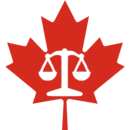
Privacy is the ability of an individual or group to seclude themselves or information about themselves, and thereby express themselves selectively.
Personality rights, sometimes referred to as the right of publicity, are rights for an individual to control the commercial use of their identity, such as name, image, likeness, or other unequivocal identifiers. They are generally considered as property rights, rather than personal rights, and so the validity of personality rights of publicity may survive the death of the individual to varying degrees, depending on the jurisdiction.
The right to privacy is an element of various legal traditions that intends to restrain governmental and private actions that threaten the privacy of individuals. Over 150 national constitutions mention the right to privacy. On 10 December 1948, the United Nations General Assembly adopted the Universal Declaration of Human Rights (UDHR), originally written to guarantee individual rights of everyone everywhere; while right to privacy does not appear in the document, many interpret this through Article 12, which states: "No one shall be subjected to arbitrary interference with his privacy, family, home or correspondence, nor to attacks upon his honour and reputation. Everyone has the right to the protection of the law against such interference or attacks."
Medical privacy, or health privacy, is the practice of maintaining the security and confidentiality of patient records. It involves both the conversational discretion of health care providers and the security of medical records. The terms can also refer to the physical privacy of patients from other patients and providers while in a medical facility, and to modesty in medical settings. Modern concerns include the degree of disclosure to insurance companies, employers, and other third parties. The advent of electronic medical records (EMR) and patient care management systems (PCMS) have raised new concerns about privacy, balanced with efforts to reduce duplication of services and medical errors.

The Personal Information Protection and Electronic Documents Act is a Canadian law relating to data privacy. It governs how private sector organizations collect, use and disclose personal information in the course of commercial business. In addition, the Act contains various provisions to facilitate the use of electronic documents. PIPEDA became law on 13 April 2000 to promote consumer trust in electronic commerce. The act was also intended to reassure the European Union that the Canadian privacy law was adequate to protect the personal information of European citizens. In accordance with section 29 of PIPEDA, Part I of the Act must be reviewed by Parliament every five years. The first Parliamentary review occurred in 2007.

Privacy laws of the United States deal with several different legal concepts. One is the invasion of privacy, a tort based in common law allowing an aggrieved party to bring a lawsuit against an individual who unlawfully intrudes into their private affairs, discloses their private information, publicizes them in a false light, or appropriates their name for personal gain.
Email privacy is a broad topic dealing with issues of unauthorized access to, and inspection of, electronic mail, or unauthorized tracking when a user reads an email. This unauthorized access can happen while an email is in transit, as well as when it is stored on email servers or on a user's computer, or when the user reads the message. In countries with a constitutional guarantee of the secrecy of correspondence, whether email can be equated with letters—therefore having legal protection from all forms of eavesdropping—is disputed because of the very nature of email.Morrison, Steven R. "What the Cops Can't Do, Internet Service Providers Can: Preserving Privacy in Email Contents". Va. JL & Tech.</ref>
Information privacy, data privacy or data protection laws provide a legal framework on how to obtain, use and store data of natural persons. The various laws around the world describe the rights of natural persons to control who is using its data. This includes usually the right to get details on which data is stored, for what purpose and to request the deletion in case the purpose is not given anymore.

The Privacy Act is the federal information-privacy legislation of Canada that came into effect on July 1, 1983. Administered by the Privacy Commissioner of Canada, the Act sets out rules for how institutions of the Government of Canada collect, use, disclose, retain, and dispose of personal information of individuals.
Privacy law is the body of law that deals with the regulating, storing, and using of personally identifiable information, personal healthcare information, and financial information of individuals, which can be collected by governments, public or private organisations, or other individuals. It also applies in the commercial sector to things like trade secrets and the liability that directors, officers, and employees have when handing sensitive information.

The Information and Privacy Commissioner of Ontario was established as an officer of the Legislature by Ontario's Freedom of Information and Protection of Privacy Act, which came into effect on January 1, 1988. The current commissioner is Patricia Kosseim.
Source protection, sometimes also referred to as source confidentiality or in the U.S. as the reporter's privilege, is a right accorded to journalists under the laws of many countries, as well as under international law. It prohibits authorities, including the courts, from compelling a journalist to reveal the identity of an anonymous source for a story. The right is based on a recognition that without a strong guarantee of anonymity, many would be deterred from coming forward and sharing information of public interests with journalists.
The Fighting Internet and Wireless Spam Act, is Canada's anti-spam legislation that received Royal Assent on December 15, 2010. The Act replaced Bill C-27, the Electronic Commerce Protection Act (ECPA), which was passed by the House of Commons, but died due to the prorogation of the second session of the 40th Canadian Parliament on December 30, 2009. The Act went into effect July 1, 2014.
There is no absolute right to privacy in Australian law and there is no clearly recognised tort of invasion of privacy or similar remedy available to people who feel their privacy has been violated. Privacy is, however, affected and protected in limited ways by common law in Australia and a range of federal, state and territorial laws, as well as administrative arrangements.
New Zealand is committed to the Universal Declaration of Human Rights and has ratified the International Covenant on Civil and Political Rights, both of which contain a right to privacy. Privacy law in New Zealand is dealt with by statute and the common law. The Privacy Act 2020 addresses the collection, storage and handling of information. A general right to privacy has otherwise been created in the tort of privacy. Such a right was recognised in Hosking v Runting [2003] 3 NZLR 385, a case that dealt with publication of private facts. In the subsequent case C v Holland [2012] NZHC 2155 the Court recognised a right to privacy in the sense of seclusion or a right to be free from unwanted intrusion. For a useful summary see: court-recognises-intrusion-on-seclusion-privacy-tort-hugh-tomlinson-qc/
Misuse of private information is a new common law tort that English courts recognised in Campbell v MGN Ltd. Arising as a branch of the law relating to breach of confidence, it has been reinforced by Article 8 of the European Convention on Human Rights, supplemented by s. 6 of the Human Rights Act 1998, which obliges public institutions not to act inconsistently with Convention rights.

The Personal Health Information Protection Act, also known as PHIPA, is Ontario legislation established in November 2004. PHIPA is one of two components of the Health Information Protection Act 2004.

R v Spencer, 2014 SCC 43 is a landmark decision of the Supreme Court of Canada on informational privacy. The Court unanimously held that internet users were entitled to a reasonable expectation of privacy in subscriber information held by Internet service providers. And as such, police attempts to access such data could be subject to section 8 of the Charter of Rights and Freedoms.
Privacy and the United States government consists of enacted legislation, funding of regulatory agencies, enforcement of court precedents, creation of congressional committees, evaluation of judicial decisions, and implementation of executive orders in response to major court cases and technological change. Because the United States government is composed of three distinct branches governed by both the separation of powers and checks and balances, the change in privacy practice can be separated relative to the actions performed by the three branches.
The right of access, also referred to as right to access and (data) subject access, is one of the most fundamental rights in data protection laws around the world. For instance, the United States, Singapore, Brazil, and countries in Europe have all developed laws that regulate access to personal data as privacy protection. The European Union states that: "The right of access occupies a central role in EU data protection law's arsenal of data subject empowerment measures." This right is often implemented as a Subject Access Request (SAR) or Data Subject Access Request (DSAR).






